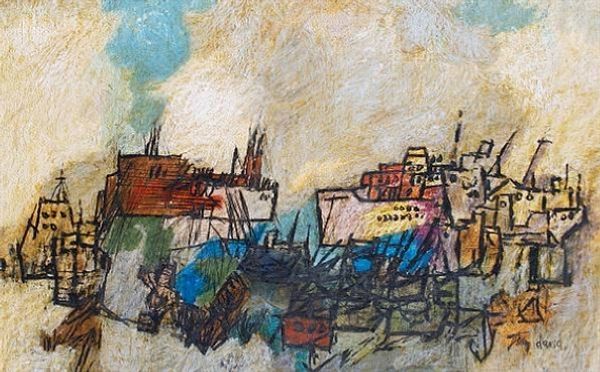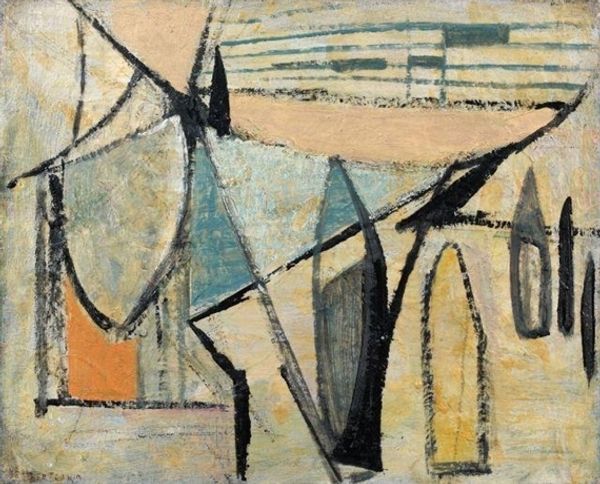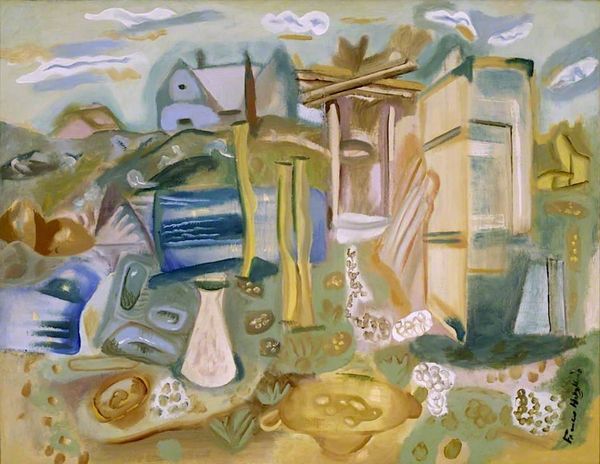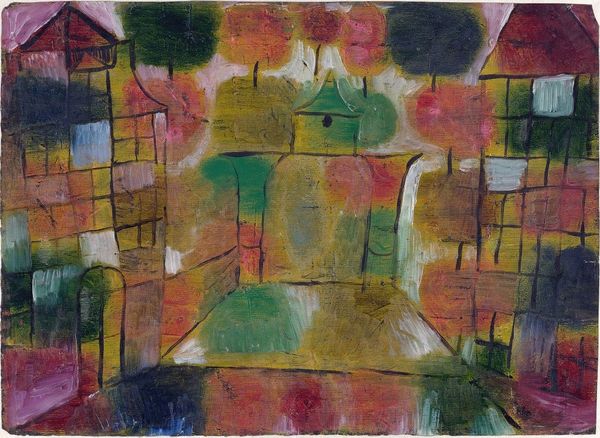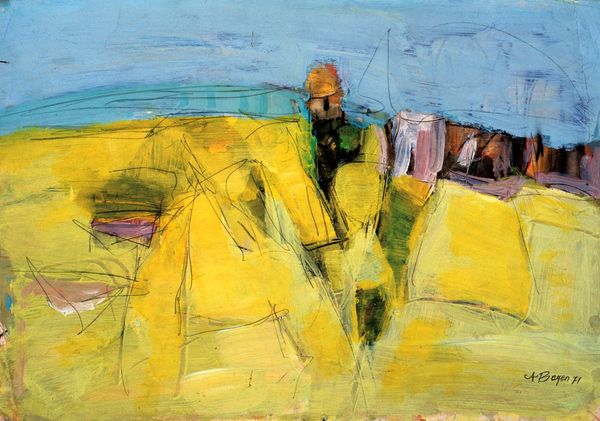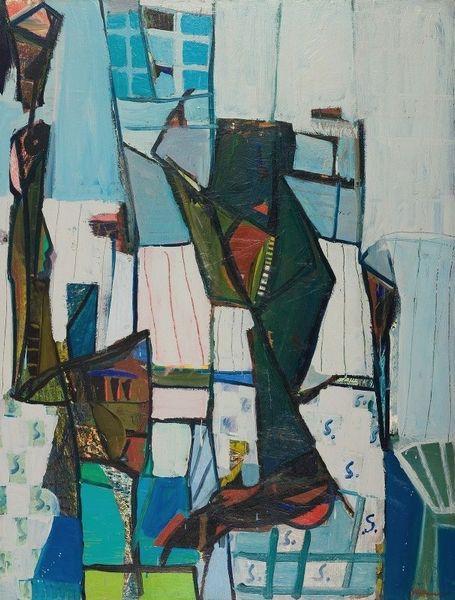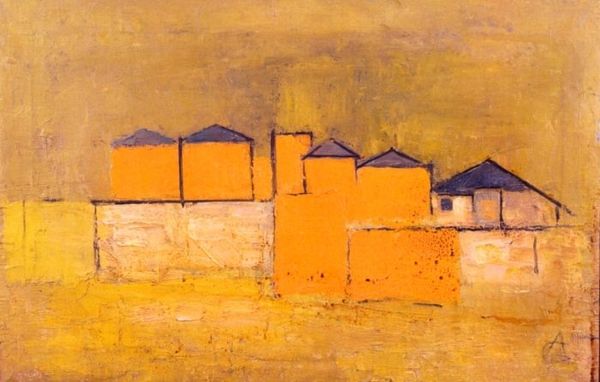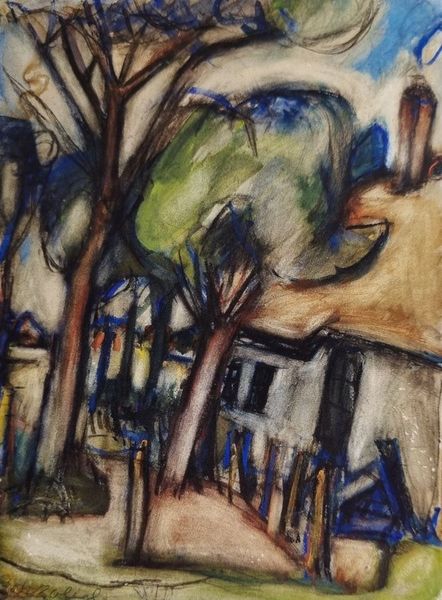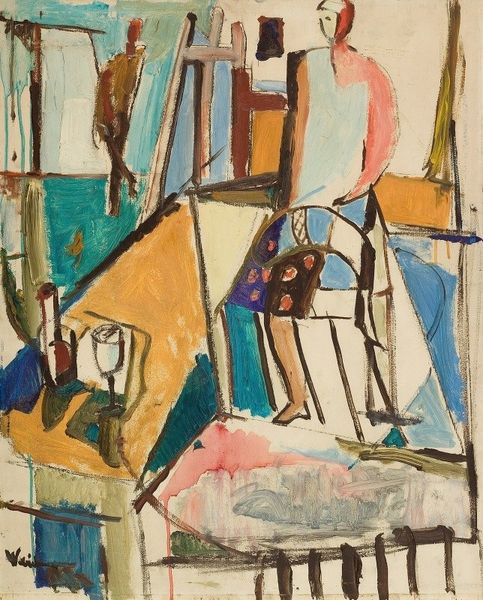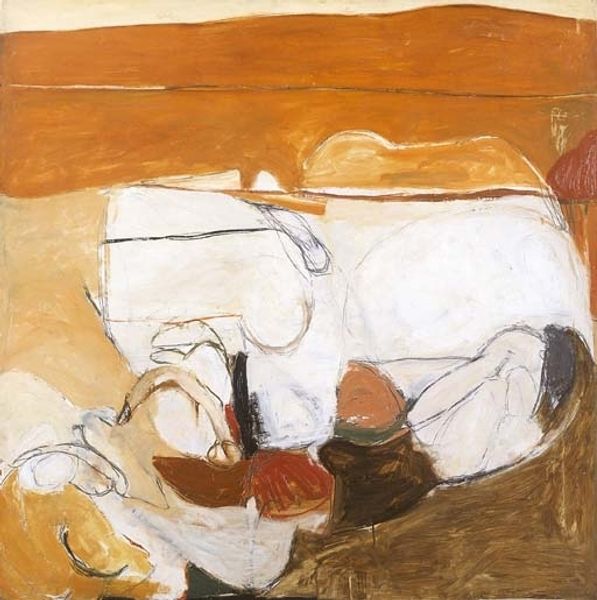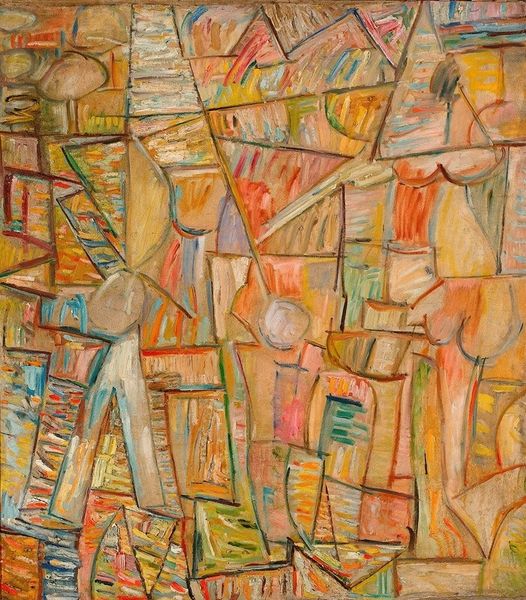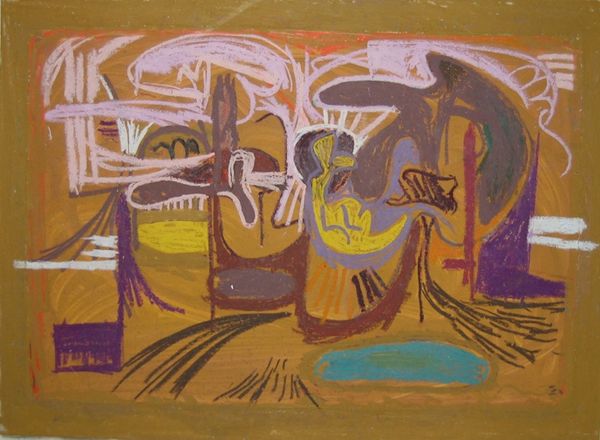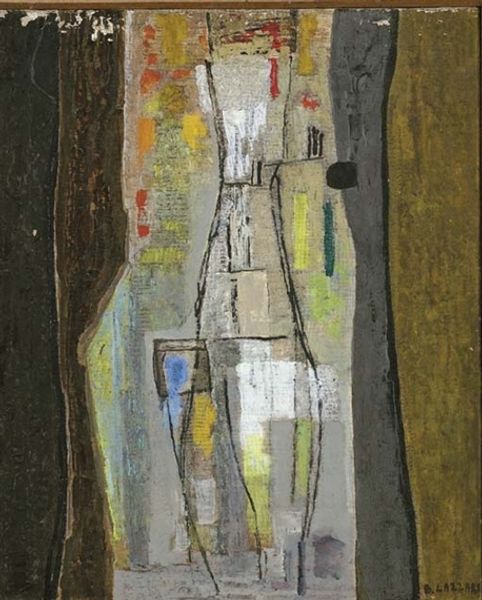
painting, acrylic-paint
#
abstract-expressionism
#
abstract expressionism
#
painting
#
landscape
#
acrylic-paint
#
form
#
geometric-abstraction
#
abstraction
Copyright: Hale Woodruff,Fair Use
Curator: Hale Woodruff's "Yellow Landscape," created in 1965 with acrylic paint, offers a compelling example of Abstract Expressionism. Editor: Immediately, the overwhelming use of yellow creates a sense of warmth, almost like looking at a memory bleached by the sun. The geometric forms evoke a landscape, but one that is fragmented and reassembled. Curator: Precisely. Woodruff’s method in applying acrylics involved layering and scraping. You can observe how this adds texture and depth, almost suggesting the land's raw, earthy strata, and also how acrylic allowed faster working compared to oil paint. Editor: The geometric shapes—those blocks of yellow, brown, and green—what could they signify? Could it be that this fragmentation is meant to communicate impermanence, possibly a meditation on fleeting moments in nature? I find it poignant given Woodruff's wider focus on cultural identity. Curator: It's crucial to also examine how Abstract Expressionism intersected with social dynamics in that era. Here’s a Black artist participating in a movement often seen as detached from reality, yet his reality was inherently bound to social and racial upheaval. It brings interesting perspective to the understanding of his artistic choices. Editor: Interesting. To your point, these abstracted forms could also be symbolic representations of land ownership, or perhaps even displaced communities. Even the colors, with their subtle variations, speak to me. That vibrant yellow, juxtaposed against earthier tones, suggests hope struggling to break through hardship. It could be a landscape, yes, but it also hints at deeper psychological terrain. Curator: Agreed. Woodruff expertly plays with visual language; consider how he teeters between outright abstraction and retaining recognizable motifs linked to the landscapes surrounding him. It raises questions of the accessibility of art and of reaching beyond formalism, while keeping ties with the physical production aspects of paint and form, a dialogue of material presence. Editor: Well, regardless of any intention, what is clear for me is the lingering emotion. "Yellow Landscape" echoes both loss and yearning—themes very consistent with the symbolism embedded within the man's complete oeuvre. Curator: Absolutely, and understanding the socio-political implications through his artistic methods lets us appreciate the layers of meaning imbued in seemingly simple strokes. Editor: It definitely adds another fascinating lens for considering it and other pieces he may have produced with it. Thank you.
Comments
No comments
Be the first to comment and join the conversation on the ultimate creative platform.
